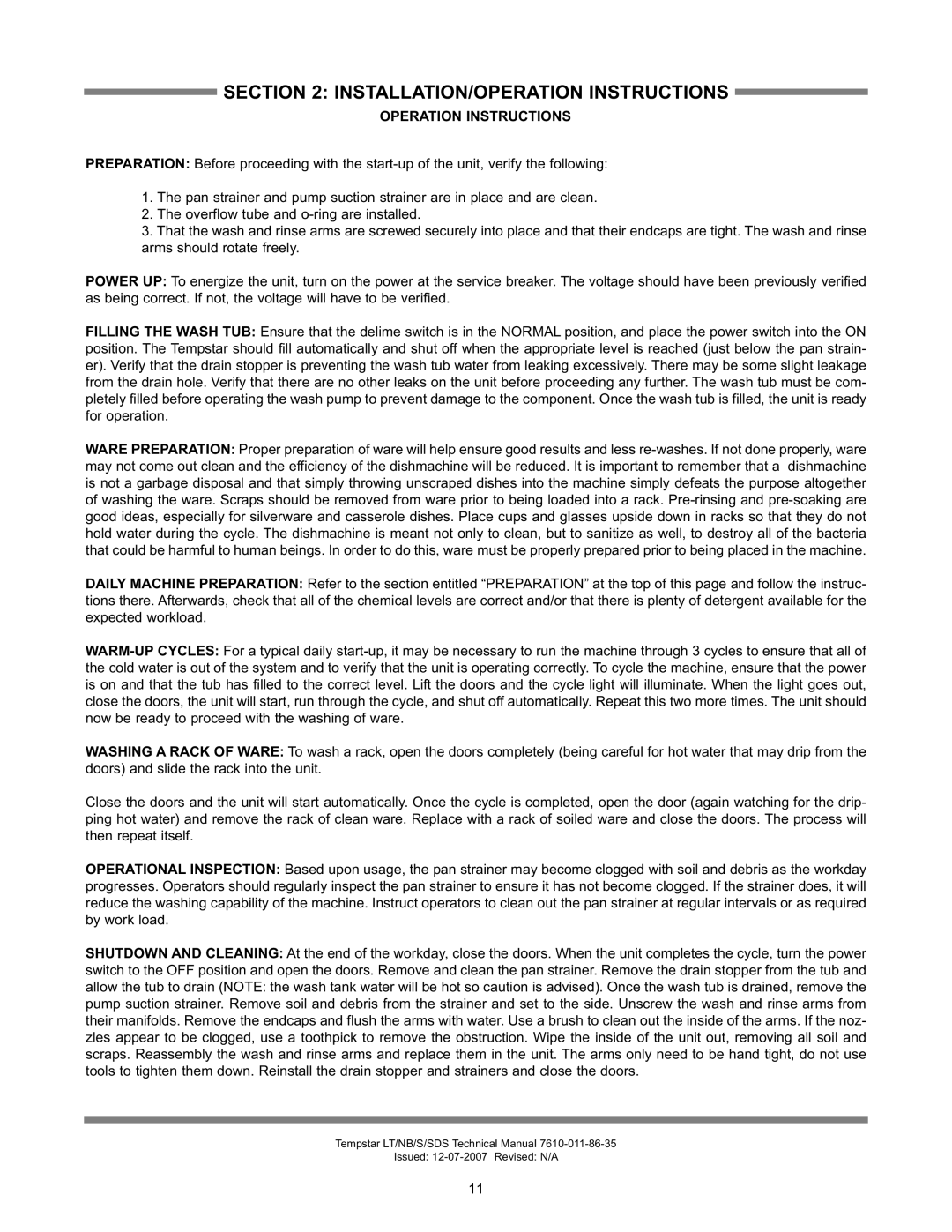Tempstar Series specifications
The Jackson Tempstar Series is a line of high-performance heating and cooling systems designed to provide reliable temperature control for both residential and commercial applications. Known for their energy efficiency, advanced technology, and durable construction, the Tempstar Series offers a range of models to fit various needs and preferences.One of the standout features of the Tempstar Series is its impressive SEER (Seasonal Energy Efficiency Ratio) and AFUE (Annual Fuel Utilization Efficiency) ratings, which indicate that these systems consume less energy compared to traditional heating and cooling units. This not only helps homeowners save on energy bills but also reduces their environmental footprint. The use of variable-speed technology in many models allows for more precise temperature control and quieter operation, contributing to overall comfort and efficiency.
The Tempstar Series incorporates advanced compressor technology, including the use of scroll compressors that provide smooth and efficient operation. This design reduces vibrations and noise, enhancing the overall user experience. In addition, the series is equipped with multi-stage heating and cooling capabilities, which ensure consistent temperature distribution throughout the space, making it ideal for areas with varying heating requirements.
Another key characteristic of the Jackson Tempstar Series is its built-in smart features, such as Wi-Fi connectivity and compatibility with smart thermostats. This allows users to monitor and control their HVAC systems remotely, providing convenience and flexibility. Some models even feature advanced diagnostic capabilities that alert homeowners to potential maintenance issues, helping to prolong the life of the unit and reduce repair costs.
The durability of the Tempstar Series is evident in its construction, with many units featuring high-quality materials designed to withstand the elements. This includes rugged cabinets and protective coatings that resist corrosion. Furthermore, Jackson offers comprehensive warranties on their products, providing peace of mind to customers.
In conclusion, the Jackson Tempstar Series represents a commitment to quality, efficiency, and innovation in heating and cooling technology. With its energy-efficient models, advanced features, and robust design, the series provides an excellent solution for those seeking reliable climate control. Whether for a residential or commercial application, the Tempstar Series stands out as a top choice for comfort and performance.

